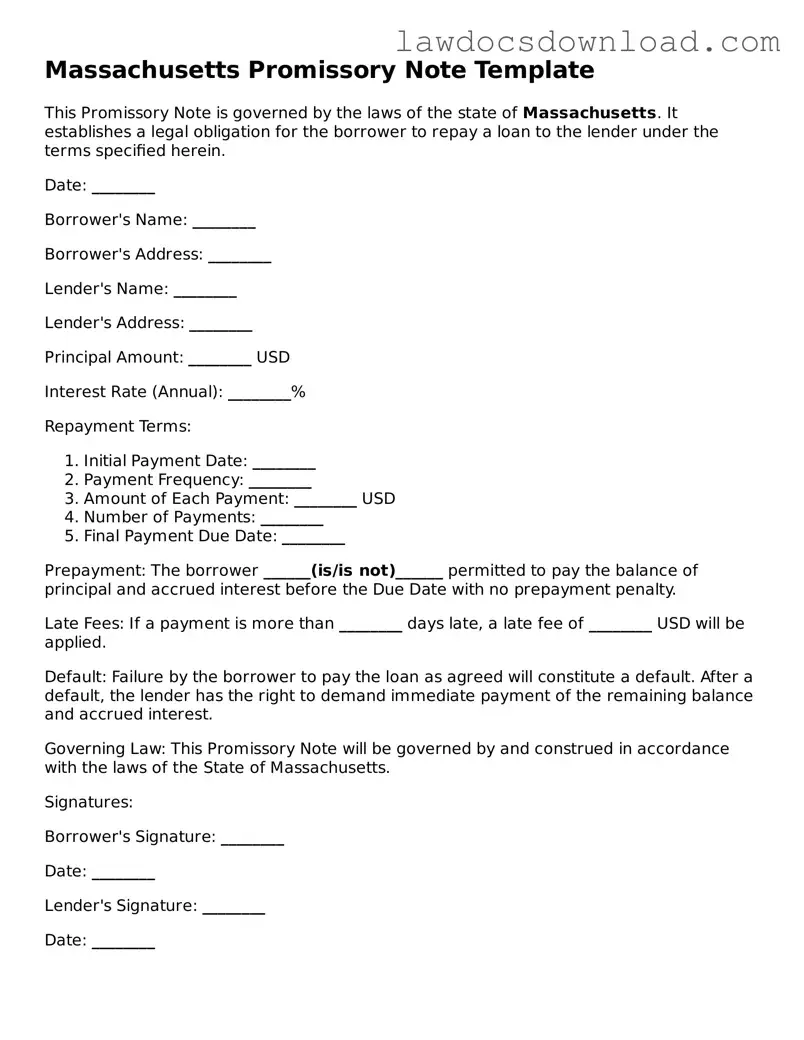The notion of a Massachusetts Promissory Note might resonate closely with the framework of a Loan Agreement. Both serve as binding contracts between a borrower and a lender, detailing the promise to repay a specified sum of money. However, the Loan Agreement dives deeper, encompassing detailed terms and conditions such as the repayment schedule, interest rates, and consequences of default. Thus, while a Promissory Note sketches the basic promise of repayment, a Loan Agreement paints the full financial picture between two parties.
Mortgage Notes exhibit a notable similarity to Promissory Notes, particularly with their shared emphasis on the borrower's promise to repay a debt. The distinctive factor for a Mortgage Note lies in its secured nature, often tied to a physical asset, such as real estate, as collateral. This collateral secures the lender's interest, providing a pathway to foreclosure should the borrower fail to honor the terms of repayment. Comparatively, while a Promissory Note may also be secured, a Mortgage Note specifically ties the promise to repay to a real property asset.
IOU documents, often seen as informal debt acknowledgments between parties, share a fundamental essence with Promissory Notes. Both declare a borrower's obligation to repay a lender, yet IOUs lack the detailed stipulations found in Promissory Notes. Typically, an IOU merely states that one party owes another without including repayment details, interest rates, or timelines. Contrarily, Promissory Notes formalize the debt obligation by incorporating these critical financial terms and conditions.
Line of Credit Agreements, while fostering a different financial structure, echo the Promissory Note's commitment to repay under specified conditions. These agreements allow the borrower access to a set amount of funds over a period, with the obligation to repay only the amount used. Unlike a Promissory Note, which specifies a fixed sum to be repaid, a Line of Credit Agreement offers flexible borrowing within a cap, underscoring a dynamic approach to borrowing and repayment.
Indenture Agreements, primarily used in the bond market, parallel the Promissory Note by recording a debt obligation. They typically involve multiple parties: the issuer, the trustee (representing the bondholders), and the bondholders themselves. Indenture Agreements detail the terms of the bond issue, such as the interest rate, maturity date, and the issuer's obligations. While Indenture Agreements are more complex and involve securities, at their core, they too are promises to repay borrowed money.
Student Loan Agreements, specific to educational borrowing, resonate with the Promissory Note through the mutual pledge to repay a debt. These agreements not only spell out the repayment obligations but also cater to the unique circumstances of student borrowers, often offering grace periods and varying interest rates. While Promissory Notes can be tailored for any lending purpose, Student Loan Agreements are inherently designed to support academic pursuits, making their specificity their standout feature.
Credit Card Agreements, although not a direct form of borrowing in the sense of receiving a lump sum upfront, share similarities with Promissory Notes in the obligations they create. These agreements grant the cardholder access to funds up to a certain limit, with the promise to repay the borrowed amount along with any accrued interest. The ongoing nature of credit card borrowing contrasts with the one-time loan structure of a Promissory Note but both ultimately revolve around the duty to repay under agreed-upon terms.
Personal Guarantees, while an assurance instrument more than a borrowing mechanism, share an intrinsic connection with Promissory Notes through the commitment to satisfy a debt. In a Personal Guarantee, a third party pledges to repay a borrower's debt should the borrower default. This guarantee underscores a layered promise to pay, akin to the direct promise found in a Promissory Note, adding a layer of security for the lender.
